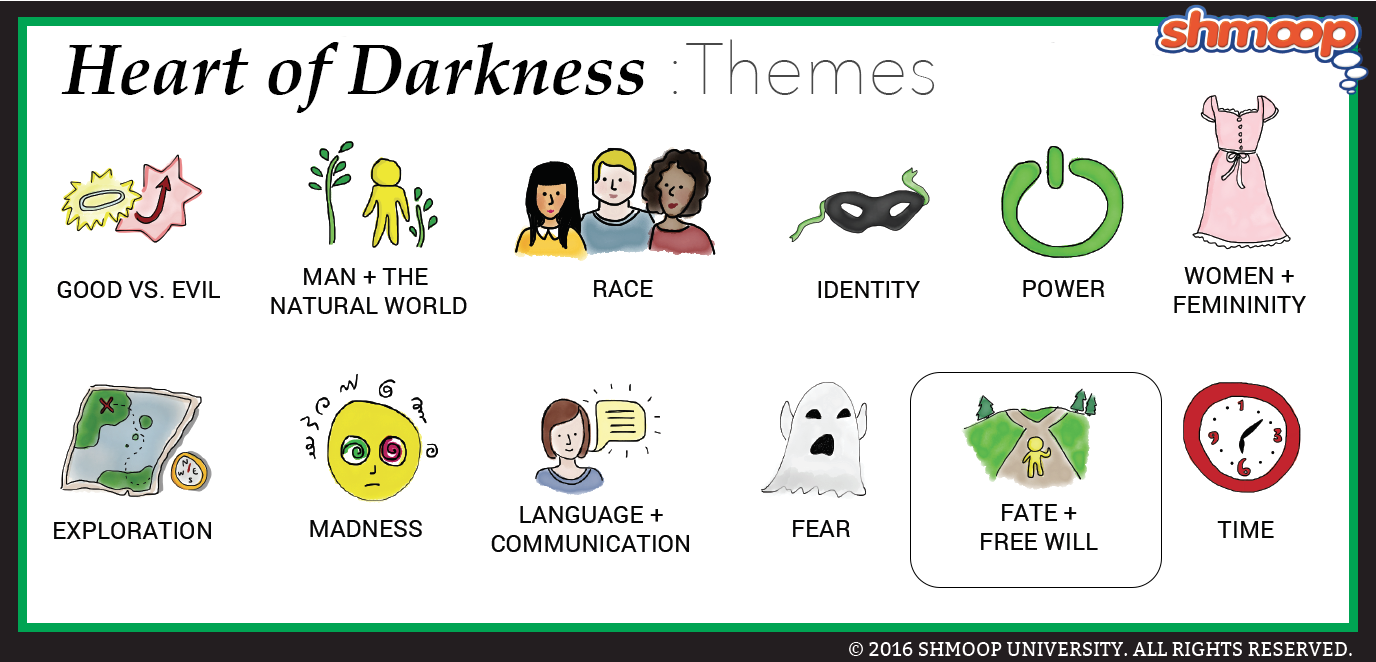 (Click the themes infographic to download.)
(Click the themes infographic to download.)
Marlow’s journey toward the interior and toward Kurtz seems inevitable, as if Marlow is drawn nearer and nearer to the heart of darkness by his own morbid curiosity and by his childhood drive to explore. Indeed, the two women knitting in Brussels represent the Fates of ancient Greek mythology. With their appearance, Marlow begins to feel as if his journey is ill-starred – yet he forges on anyway. The interplay between fate and free will informs the action of the plot, calling into question whether Marlow could have avoided his descent into madness, his corruption, and his subsequent revelations about human nature.
Questions About Fate and Free Will
- How are the two old knitting women embodiments of Fate? Why does Marlow envision them at the end?
- Are all the accidents that keep delaying Marlow’s journey into the interior truly incidental?
- How is Kurtz a product of fate? To what extent do his personal choices affect his descent into madness? Could his demise have been prevented?
- Is Marlow destined to meet Kurtz? How do his personal choices towards the end of the novel affect Kurtz, himself, and the Intended?
Chew on This
Marlow cannot help but meet Kurtz: he is destined to go into the interior, experience it much as Kurtz did, and eventually meet the man himself. If we accept Kurtz as Marlow’s foil, this means that Kurtz was fated to go mad in the interior and couldn't stop it by any conscious decision.
Marlow’s meeting and renunciation of Kurtz is a result of personal choice; in other words, he could have glorified Kurtz as the others did, but he made the choice not to.